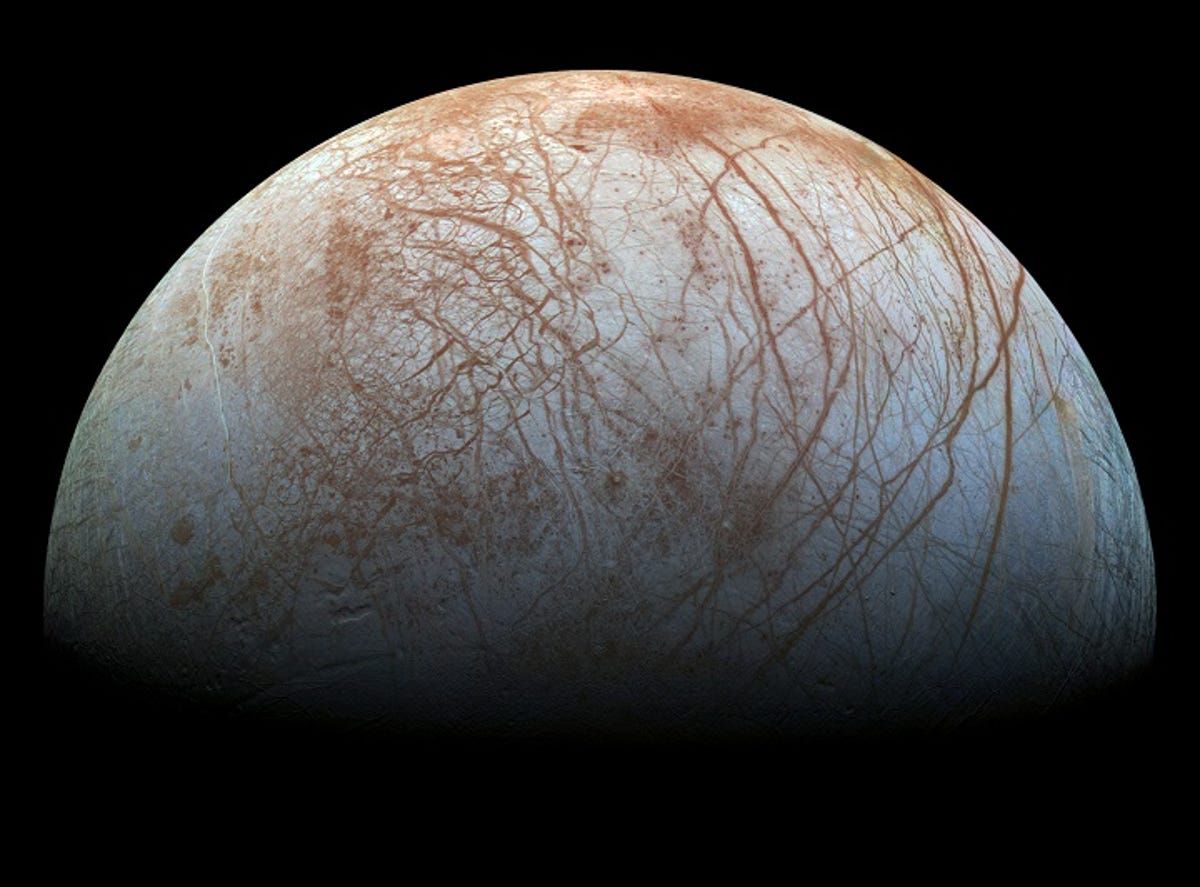Europa: NASA looks to Jupiter's mysterious moon (pictures)
NASA is entering the planning phase for a mission to Europa, believed to have a massive ocean beneath its icy surface.

Europa looking majestic
The White House has proposed a budget of $18.5 billion for NASA for the next fiscal year, with about $30 million going toward planning a mission to Europa, Jupiter's intriguing moon. (The fiscal year starts October 1 and the budget must first be approved by Congress.) Scientists are hopeful that the suspected ocean under the icy surface could hold clues to the building blocks of life.
This remastered view of Europa was created from a mosaic of color images taken in the late 1990s by NASA's Galileo spacecraft. Modern image-processing technology allowed NASA to produce this crisp, clear picture of the icy object.
Related article: NASA plans mission to Jupiter's extraordinary moon Europa
Europa's icy cliffs
Jupiter's moon Europa is covered in ice, which scientists suspect is covering a vast ocean below. This image from NASA's Galileo mission shows the Conamara Chaos region of the moon and the icy plates located there. The cliffs are several hundred feet high.
Related article: NASA plans mission to Jupiter's extraordinary moon Europa
Europa's dramatic surface features
A mosaic image captured by NASA's Galileo spacecraft in 1997 shows striations across the surface of Jupiter's moon Europa. Ridges, plains and mountains are all visible in the image. Europa is covered in ice, but may have a large ocean under the frozen surface layer.
Related article: NASA plans mission to Jupiter's extraordinary moon Europa
Europa's fractured surface
NASA's Galileo spacecraft visited Jupiter and its moons in the 1990s. This image of the moon Europa shows major fractures on the icy surface. The broken plates of crust are as large as 20 miles across. The dark areas may be icy slush and rocky debris, according to NASA.
Related article: NASA plans mission to Jupiter's extraordinary moon Europa
Europa rising over Jupiter
NASA's New Horizons spacecraft took this dramatic image of Europa hanging above Jupiter in 2007. NASA notes the image is one of several taken with a eye toward artistic, rather than scientific, value.
Related article: NASA plans mission to Jupiter's extraordinary moon Europa
Europa's 'freckles'
NASA's Galileo spacecraft got a good look at Jupiter's moon Europa when it visited in the 1990s. The dark spots are referred to as "lenticulae," which is Latin for "freckles." Each spot is around six miles across. Scientists suspect Europa may have a deep ocean beneath its surface ice.
Related article: NASA plans mission to Jupiter's extraordinary moon Europa
Vapor plumes from Europa
NASA's Hubble Space Telescope was believed to have spotted water vapor plumes rising from Jupiter's moon Europa. This composite image shows the source region for these possible plumes. NASA is planning to send a mission to study Europa and hopefully learn more about the suspected oceans beneath the moon's ice.
Related article: NASA plans mission to Jupiter's extraordinary moon Europa
Red bands on Europa's surface
Color data collected by NASA's Galileo spacecraft in 1997 combined with grayscale data gives us this intriguing image of Europa's surface. Europa is a fascinating moon of Jupiter. "The blue-white terrains indicate relatively pure water ice, whereas the reddish areas contain water ice mixed with hydrated salts, potentially magnesium sulfate or sulfuric acid," NASA says.
Related article: NASA plans mission to Jupiter's extraordinary moon Europa

